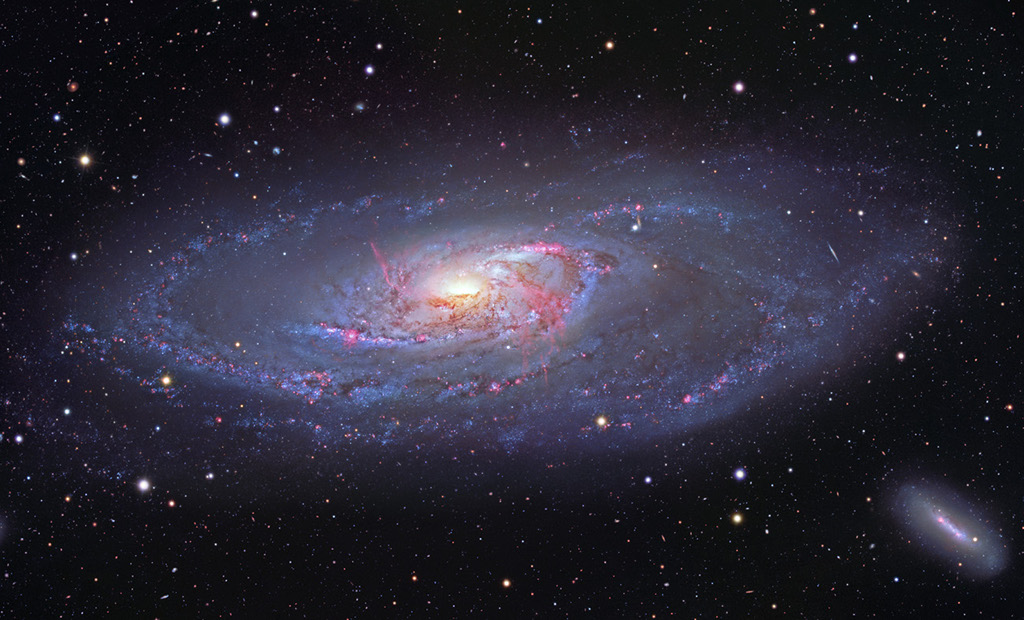2021年04月09日
Messier 106
Image Credit: NASA, Hubble Legacy Archive, Kitt Peak National Observatory;
Amateur Data & Processing Copyright: Robert Gendler
Explanation: Close to the Great Bear (Ursa Major) and surrounded by the stars of the Hunting Dogs (Canes Venatici), this celestial wonder was discovered in 1781 by the metric French astronomer Pierre Mechain. Later, it was added to the catalog of his friend and colleague Charles Messier as M106. Modern deep telescopic views reveal it to be an island universe – a spiral galaxy around 30 thousand light-years across located only about 21 million light-years beyond the stars of the Milky Way. Along with a bright central core, this stunning galaxy portrait, a composite of image data from amateur and professional telescopes, highlights youthful blue star clusters and reddish stellar nurseries tracing the galaxy’s spiral arms. It also shows off remarkable reddish jets of glowing hydrogen gas. In addition to small companion galaxy NGC 4248 at bottom right, background galaxies can be found scattered throughout the frame. M106, also known as NGC 4258, is a nearby example of the Seyfert class of active galaxies, seen across the spectrum from radio to X-rays. Active galaxies are powered by matter falling into a massive central black hole.
Tomorrow’s picture: light-weekend
星系M106
影像提供: NASA, Hubble Legacy Archive, Kitt Peak National Observatory;
业余数据提供、影像处理与版权: Robert Gendler
说明: 邻近大熊座,被猎犬座群星环绕的这个星系,是由公制推手、法国天文学家埃尔·梅钦发现于1781年。后来,他的朋友兼同事查尔斯·梅西耶把它纳入他编录的星表里,成为M106。近代的深空影像证实它是个宇宙岛,一个位在银河系众星后方,宽约3万光年,离我们只有2千1百万光年远的螺旋星系。除了鲜明的尘埃带和明亮的星系核之外,这幅整合业余及专业望远镜数据的精采组合影像,也突显了螺旋臂上的年轻泛蓝星团和泛红的恒星诞生区,以及由辉光氢气构成的精彩泛红喷流。此外,在这幅影像里,可见到右下角的小伴星系NGC 4248,以及散布在影像各处的背景星系。M106 (亦称NGC 4258)是一个邻近的赛弗特活跃星系,在电波至X射线的所有电磁波段都很明亮。活跃星的能源,据信是来自掉进大质量星系核心黑洞的物质。
明日的图片 : light-weekend








如何下载原图?
请参阅说明。单击图片将下载可用的最高分辨率版本。